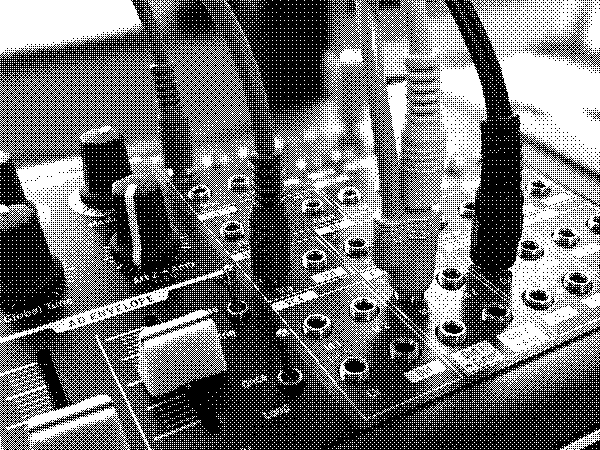Minibrute 2s
hardwareArturia’s Minibrute 2s is the first hardware synthesizer I bought, about two years ago. This is what got me to consider actually making electronic music, instead of just toying around with sounds every now and then.

What it is
The Minibrute 2s is, first of all, an analog monophonic synthesizer with two oscillators, two envelopes, two LFOs and a filter—nothing out of the ordinary, really. In addition, it has a really nice step sequencer that can record pitch, gate, and two additional tracks that can be used to control… anything. Thanks to the patch bay, everything that generates a signal (LFOs, envelopes, the sequencer tracks, the oscillators) can be patched into everything that can be controlled. This can be used for more traditional things (increase the filter envelope amount with higher velocity, have a slow envelope fade in a vibrato on the oscillator) or more unusual things (modulate the amp envelope’s attack time by an audio rate oscillator? Vary the strength of this modulation with an LFO? The sky’s the limit!).

Most importantly it sounds really, really nice. See below for sound samples of a few things I like to do with it.
Why I got it
I had Arturia on my radar for a while, mainly for their software instruments (I have been using an “SE” version of the Mini V Minimoog emulation every now and then), but especially when they released the original Minibrute. I played around with it in a store a few times and it was a pretty fun (and good sounding) machine, but I didn’t really consider buying one since I had no real use for it at the time. A few years later, along came the Microbrute which I again played in a store and almost bought a while later, especially due to the prospect of adding some eurorack modules later to hook up through the small patch bay.
Good thing I didn’t buy it then, because a while later the Minibrute 2s arrived and it was everything I wanted to do with the Microbrute, just more and better. I opted for the 2s version with the integrated sequencer (although look mum no computer insists the “s” stands for spaghetti) instead of the keyboard, because I could always connect one of my MIDI keyboards but didn’t have any kind of hardware sequencer yet.
So in summary, I wanted something to create sequences, tweak sounds and maybe get some unexpected stuff by patching together stuff, and it excels at all that.
What I use it for
Even though the sequencer was one of the motivations to buy the 2s, I don’t actually use it that much at the moment. Since I got my KeyStep Pro (post about it coming up next), I control the Minibrute using CV instead. I sometimes use both sequencers together though, with pitch being controlled by the KeyStep Pro, and gate or some modifier triggered by a rhythmic sequence on the Minibrute. Keeping the sequences synchronized using an analog clock signal from the KeyStep Pro works perfectly fine, so there is no downside to splitting duties between the sequencers.
My main use case for the Minibrute is as a bass voice. Combining the wave folded (i.e. some “metalizer” applied) triangle oscillator and a square wave an octave below, with metalizer strength and filter cutoff controlled by keyboard velocity, gives something that sounds a bit like an extra metallic electric bass guitar to me:
The first part of the clip is just the dry signal from the Minibrute, the rest has some effects applied from the Korg NTS-1 (post about that one coming up as well) and some drums from the Elektron Model:Cycles (guess what, I’ll do a post about that one, too).
Another fun thing is to add a few (high) notes from a chord and some blank steps to a sequence, play it in random order and tweak the envelope attack and release:
This is again the Minibrute run through the NTS-1 for effects with some additional sounds from the Model:Cycles.
These are some of the kinds of sounds you can expect to hear from the
‘brute on future monoid.run tracks. Stay tuned for similar posts
about the rest of the hardware setup!